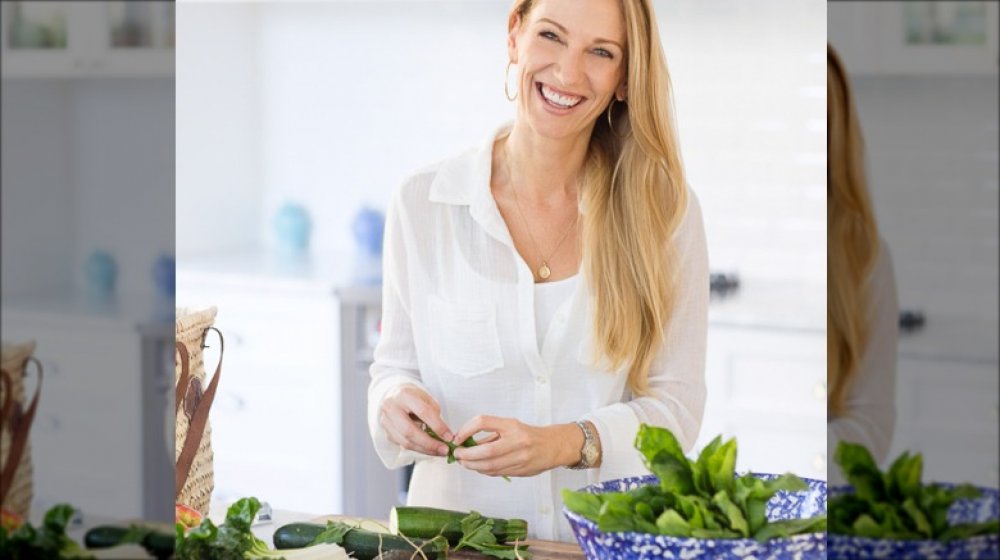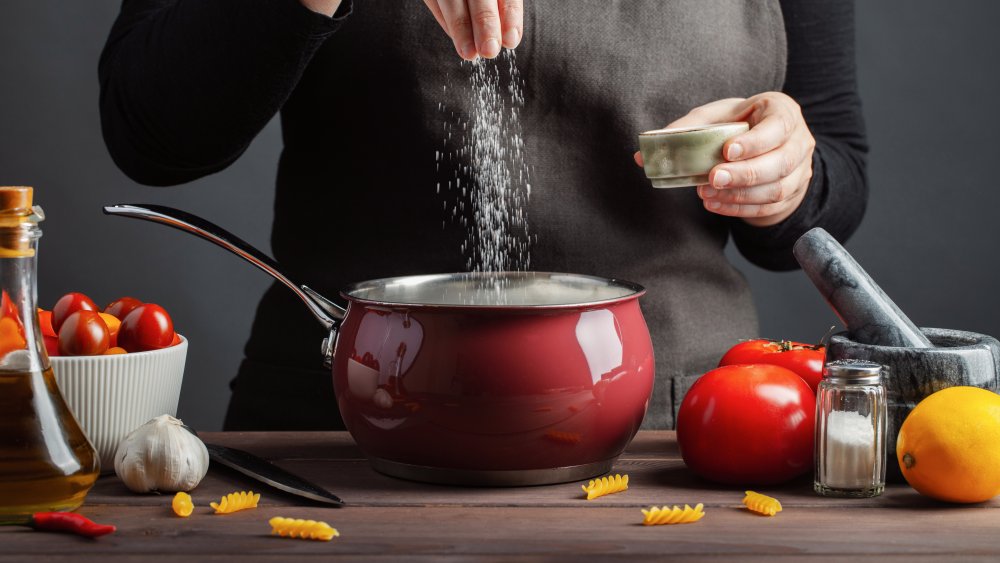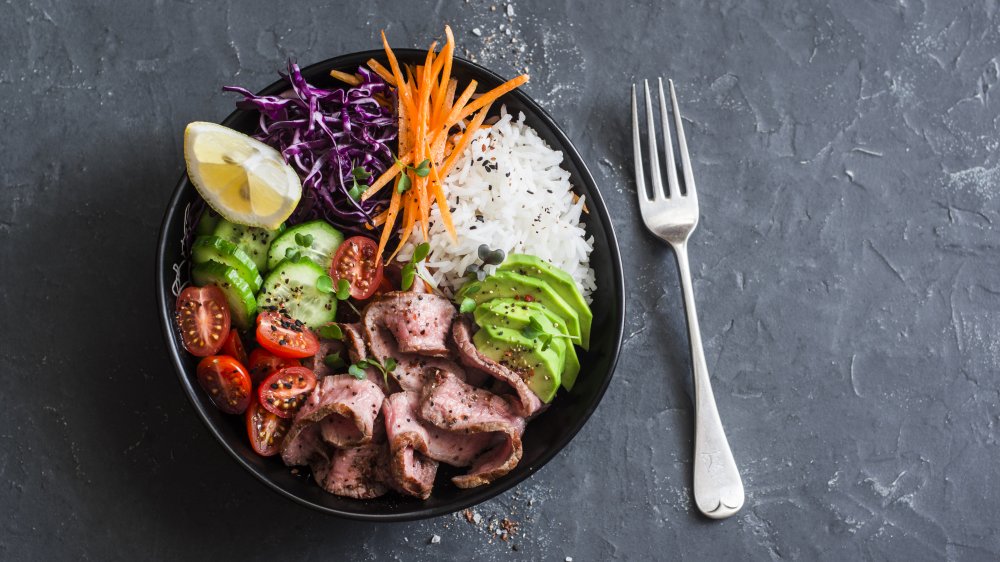Mistakes Everyone Makes When Meal Prepping For The Week
One of the time-saving hacks we're always told will help us to lead more productive – not to mention healthier – lives involves preparing meals ahead of time. That way, no matter how crazy busy things get during the week, we'll still have a freezer full of healthy meals that can be microwaved in minutes as well as nutritious lunches and snacks all packed and ready to be taken to work or school.
So how come, even if we've gone through all the effort of making a week's worth of meals, we still wind up saying the heck with it and ordering pizza by Wednesday, swinging through Mickey D's drive-thru on Thursday, and going out to eat come Friday night? Well, maybe we're just not prepping our meals the right way. In order to help us figure out what we've all been doing wrong, we spoke with Lisa Bryan, recipe developer and food blogger at Downshiftology, and she had a few suggestions on how to plan ahead for more enjoyable meals.
Don't try to prep too much
Bryan says one problem many of us face is a tendency to become overly-ambitious with the meals we're planning and preparing. As she explains, "Trying to tackle too much can be exhausting, stressful, and wasteful," and taking on this task can wind up with "the exact opposite intent you're going for." She says it's best to keep things simple, especially if you're new to make-ahead meals.
Make it easier on yourself by focusing on just a few featured ingredients, like maybe some roasted vegetables, a cooked, shredded chicken, or a batch of hummus. If you enjoy the cooking process more, it will help you to stay relaxed, and you'll probably have more appetite for food you don't resent having spent so much time preparing. Also, not going overboard on the quantity of food you cook will lead to less waste or spoilage by the end of the week.
Variety is key
Bryan recommends prepping individual ingredients rather than doing something like making a huge batch of chili or a huge casserole and then thinking you're still going to be wanting to eat either of those things by the end of the week. Instead, as she says, "Individual ingredients allow you to create mix-and-match meals for endless variety. It's like having a buffet bar in your fridge full of nutrient-dense options, which miraculously turn into tasty meals in under five minutes."
She also advises adding color to your meals. No, not like adding food coloring to your omelet to make green eggs and ham (although that could be kind of fun), but like "eating the rainbow" as recommended by the American Heart Association. Or, as Bryan puts it, "remember that by adding color you're not only boosting vitamins, minerals, nutrients...but you're also boosting flavor. Aim for a rainbow of color every week, from orange carrots to red beets to green broccoli and purple cabbage." Oh, and be sure to make use of seasonings, spices, and sauces to "jazz it all up!" The tastier the food, the more you'll look forward to eating it, and the less desirable that drive-thru window's going to look at the end of another long day.


